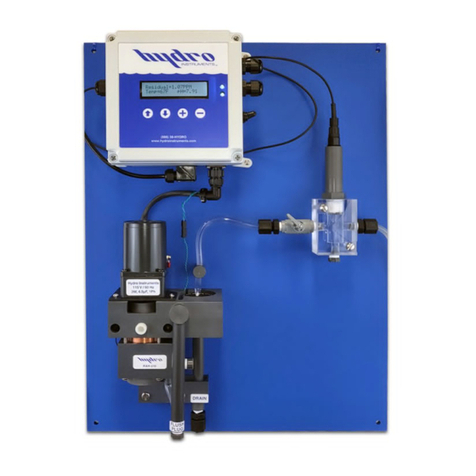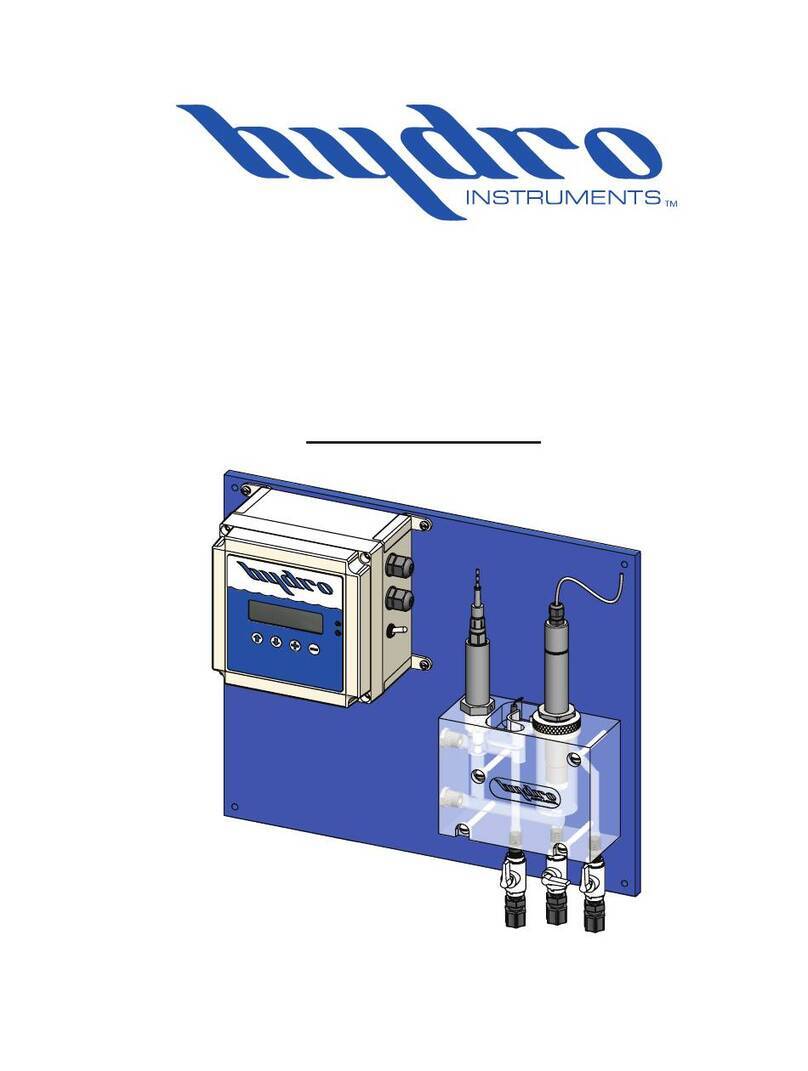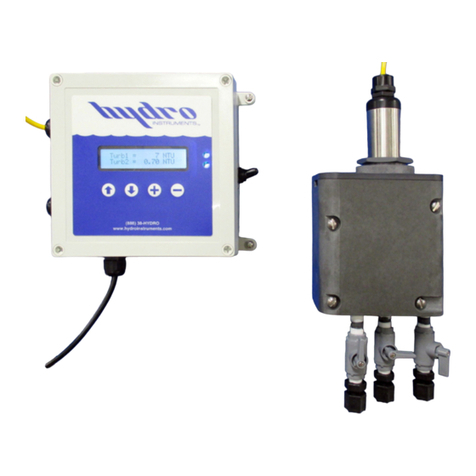The high level alarm is adjustable from approximately 15 to 30 inches of Hg. To adjust the
high level, insert a screwdriver into pot R16 and rotate it to the desired level. MIN = 15
inches of Hg. and MAX = 30 inches of Hg.
NOTE: If you want to disable the high alarm, turn the pot clockwise until it stops.
B. ANALOG OUTPUT
The VM-150 has an analog output, which will allow the vacuum to be remotely monitored.
The connection for this is located in the upper left section of the printed circuit board (See
Figure 1). They are labeled GND for ground and OUT for the output. The output is capable
of sourcing 0 to 3 VDC or 0 to 3 mA. If a 4 to 20 mA loop is required, a signal conditioner
can be used to convert the output.
C. MAINTENANCE AND CALIBRATION
Once the Series VM-150 has been in operation for approximately one week, the unit should
be checked for the correct zero reading. This is the reading when no vacuum is present.
Ideally, the zero reading would be 00.0. However, due to the ambient temperature, some
variation is normal. If the zero reading is over 00.7 then an adjustment is needed. The zero
adjustment pots are located in the upper right hand corner of the board. One of the pots, if
looked at from the middle of the board, is rotated all the way to the right and the other pot
is rotated around the 12:00 position. The pot that is close to the 12:00 position is the pot to
adjust. Slowly turn this pot to get the zero calibration. If the reading still does not read 00.0
then slowly adjust the other pot until a reading of 00.0 is set.
NOTE: At least one of the pots must always be rotated all the way to the right.
Once a month the system should be functionally tested, this testing should include all
relays, LED indicators, delay timer and vacuum level accuracy. To perform these tests adjust
your vacuum level up and down to cause the high and low alarms to engage. The delay
timer and reset can also be tested in the same manner. At this time, inspect the board for
any corrosion or loose wires. If corrosion is present check all fittings for a snug fit.
Corrosion can only be removed by a trained technician. The outside of the enclosure can be
cleaned with warm water and a damp cloth.
CAUTION: DO NOT ATTEMPT TO CLEAN ANY CORROSION FROM THE BOARD. HIGH
VOLTAGE EXISTS ON THE BOARD.






























